Nationality British Period Early 20th century | Name Siegfried Sassoon Role Poet | |
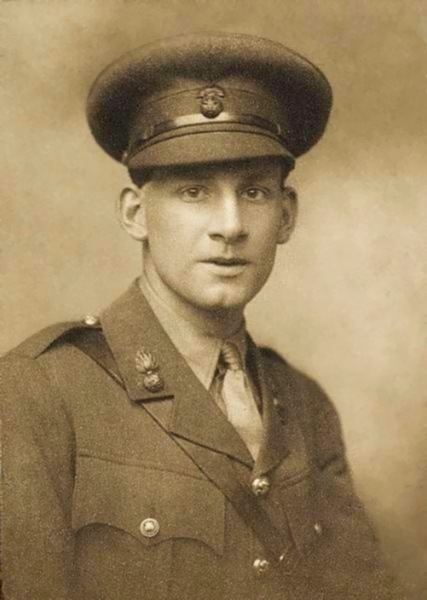 | ||
Born Siegfried Loraine Sassoon8 September 1886Matfield, Kent, England ( 1886-09-08 ) Occupation Soldier, Poet, Diarist, Memoirist, Journalist Genre Poetry, Fiction, biography Notable works The Complete Memoirs of George Sherston Influenced by Robert Graves, W. H. R. Rivers, Thomas Hardy, E. M. Forster, Henry Vaughan, Edmund Gosse, Henry Head Parents Alfred Ezra Sassoon, Theresa Thornycroft Books Memoirs of a Fox‑Hunti, Memoirs of an Infantry Officer, The War poems of Siegfried, The complete memoirs, Sherston's Progress Similar People Wilfred Owen, Rupert Brooke, Robert Graves, Edmund Blunden, Isaac Rosenberg | ||
Siegfried sassoon and poets of the great war
Siegfried Loraine Sassoon, (8 September 1886 – 1 September 1967) was an English poet, writer, and soldier. Decorated for bravery on the Western Front, he became one of the leading poets of the First World War. His poetry both described the horrors of the trenches, and satirised the patriotic pretensions of those who, in Sassoon's view, were responsible for a jingoism-fuelled war. Sassoon became a focal point for dissent within the armed forces when he made a lone protest against the continuation of the war in his "Soldier's Declaration" of 1917, culminating in his admission to a military psychiatric hospital; this resulted in his forming a friendship with Wilfred Owen, who was greatly influenced by him. Sassoon later won acclaim for his prose work, notably his three-volume fictionalised autobiography, collectively known as the "Sherston trilogy".
Contents
- Siegfried sassoon and poets of the great war
- Siegfried sassoon a poet s life
- Early life and education
- The Western Front Military Cross
- War opposition and Craiglockhart
- Editor and novelist
- Affairs
- Marriage
- Religion
- Death and awards
- Legacy
- Poetry collections
- Prose books
- In popular culture
- References
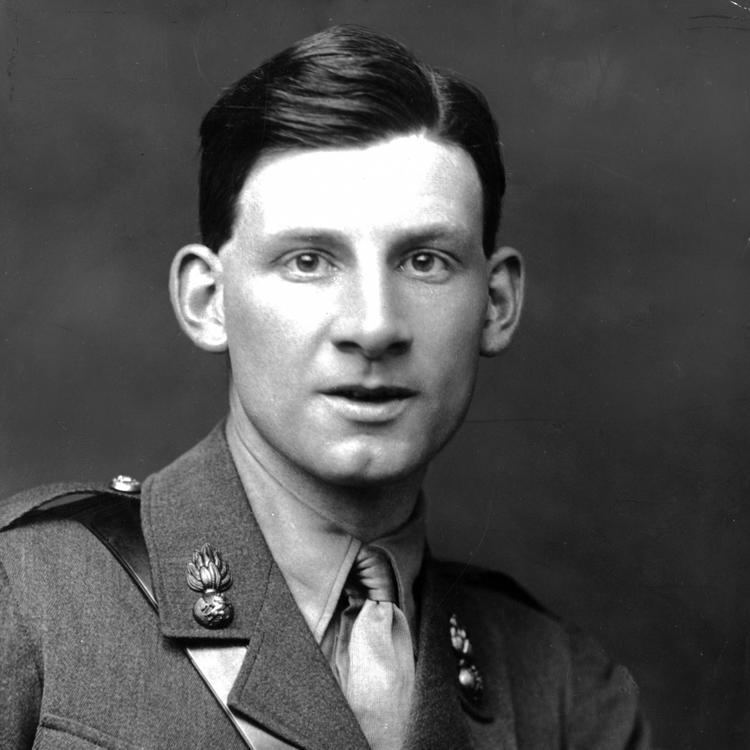
Siegfried sassoon a poet s life
Early life and education
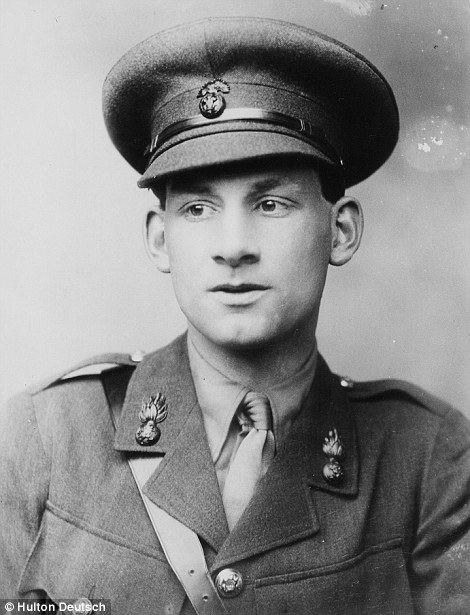
Siegfried Sassoon was born and grew up in the neo-gothic mansion named "Weirleigh" (after its builder, Harrison Weir), in Matfield, Kent, to a Jewish father and an Anglo-Catholic mother. His father, Alfred Ezra Sassoon (1861–1895), son of Sassoon David Sassoon, was a member of the wealthy Baghdadi Jewish Sassoon merchant family. For marrying outside the faith, Alfred was disinherited. Siegfried's mother, Theresa, belonged to the Thornycroft family, sculptors responsible for many of the best-known statues in London—her brother was Sir Hamo Thornycroft. There was no German ancestry in Siegfried's family; his mother named him Siegfried because of her love of Wagner's operas. His middle name, Loraine, was the surname of a clergyman with whom she was friendly.
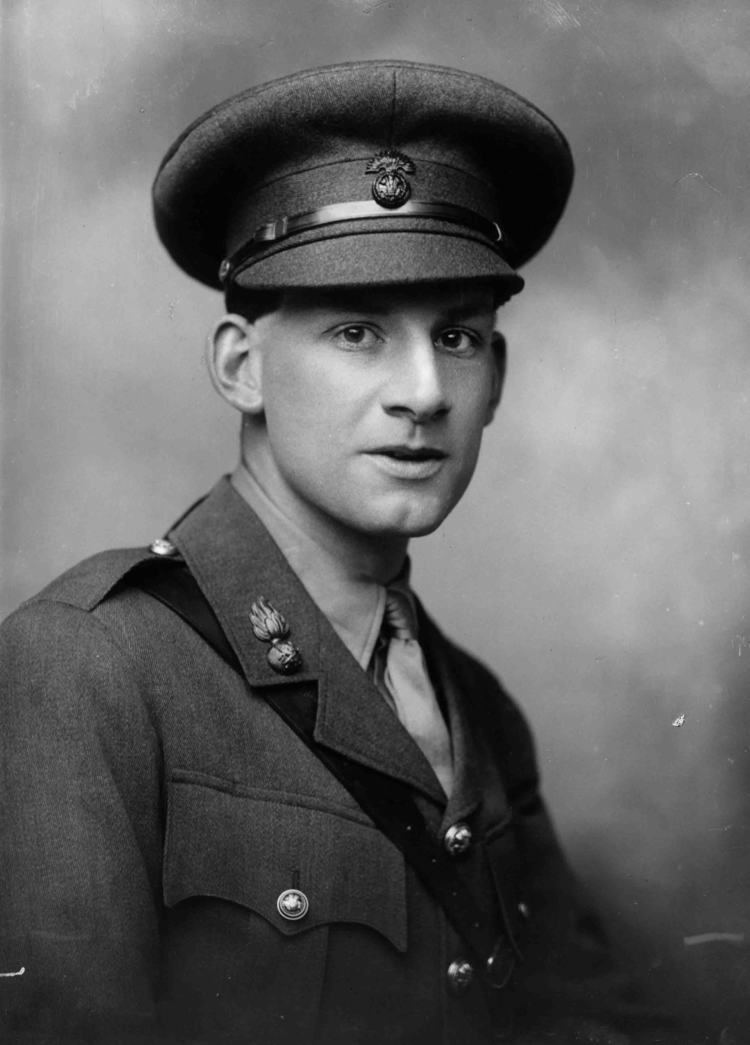
Siegfried was the second of three sons, the others being Michael and Hamo. When he was four years old his parents separated. During his father's weekly visits to the boys, Theresa locked herself in the drawing-room. In 1895 Alfred Sassoon died of tuberculosis.
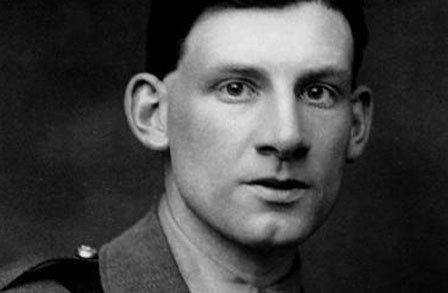
Sassoon was educated at the New Beacon School, Sevenoaks, Kent; at Marlborough College, Wiltshire; and at Clare College, Cambridge, where from 1905 to 1907 he read history. He went down from Cambridge without a degree and spent the next few years hunting, playing cricket and writing verse: some he published privately. Since his father had been disinherited from the Sassoon fortune for marrying a non-Jew, Siegfried had only a small private fortune that allowed him to live modestly without having to earn a living (however, he would later be left a generous legacy by an aunt, Rachel Beer, allowing him to buy the great estate of Heytesbury House in Wiltshire.) His first published success, The Daffodil Murderer (1913), was a parody of John Masefield's The Everlasting Mercy. Robert Graves, in Good-Bye to All That describes it as a "parody of Masefield which, midway through, had forgotten to be a parody and turned into rather good Masefield."
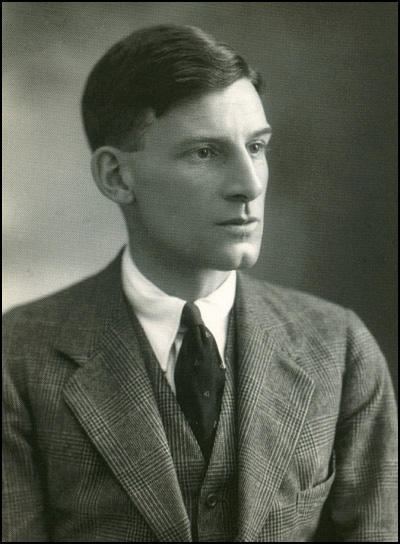
Sassoon expressed his opinions on the political situation before the onset of the First World War thus—"France was a lady, Russia was a bear, and performing in the county cricket team was much more important than either of them". Sassoon wanted to play for Kent County Cricket Club; Kent Captain Frank Marchant was a neighbour of Sassoon. Siegfried often turned out for Bluehouses at the Nevill Ground, Tunbridge Wells, where he sometimes played alongside Arthur Conan Doyle. He had also played cricket for his house at Marlborough College, once taking 7 wickets for 18 runs. Although an enthusiast, Sassoon was not good enough to play for Kent, but he played cricket for Matfield village, and later for the Downside Abbey team, continuing into his seventies.
The Western Front: Military Cross
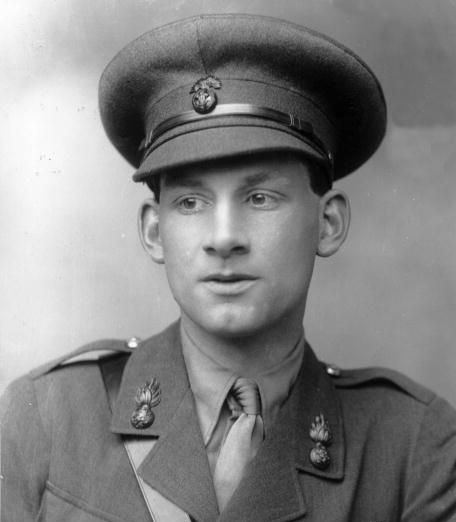
Motivated by patriotism, Sassoon joined the British Army just as the threat of a new European war was recognized, and was in service with the Sussex Yeomanry on 4 August 1914, the day the United Kingdom of Great Britain and Ireland declared war on Germany. He broke his arm badly in a riding accident and was put out of action before even leaving England, spending the spring of 1915 convalescing. (Rupert Brooke, whom Siegfried had briefly met, died in April on the way to Gallipoli.) He was commissioned into the 3rd Battalion (Special Reserve), Royal Welch Fusiliers, as a second lieutenant on 29 May 1915. On 1 November his younger brother Hamo was killed in the Gallipoli Campaign, and in the same month Siegfried was sent to the 1st Battalion in France. There he met Robert Graves, and they became close friends. United by their poetic vocation, they often read and discussed each other's work. Though this did not have much perceptible influence on Graves's poetry, his views on what may be called 'gritty realism' profoundly affected Sassoon's concept of what constituted poetry. He soon became horrified by the realities of war, and the tone of his writing changed completely: where his early poems exhibit a Romantic, dilettantish sweetness, his war poetry moves to an increasingly discordant music, intended to convey the ugly truths of the trenches to an audience hitherto lulled by patriotic propaganda. Details such as rotting corpses, mangled limbs, filth, cowardice and suicide are all trademarks of his work at this time, and this philosophy of 'no truth unfitting' had a significant effect on the movement towards Modernist poetry.
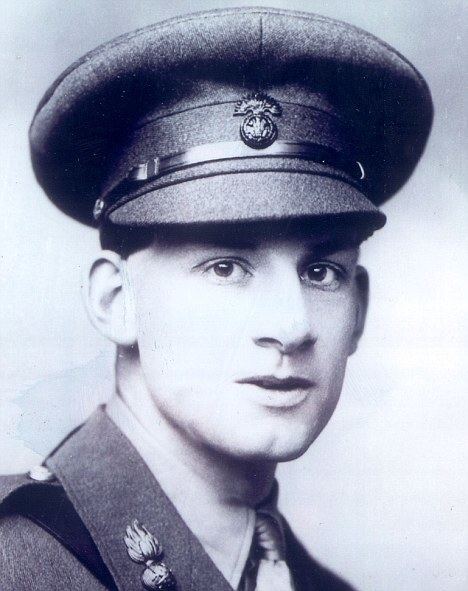
Sassoon's periods of duty on the Western Front were marked by exceptionally brave actions, including the single-handed capture of a German trench in the Hindenburg Line. Armed with grenades, he scattered sixty German soldiers:
He went over with bombs in daylight, under covering fire from a couple of rifles, and scared away the occupants. A pointless feat, since instead of signalling for reinforcements, he sat down in the German trench and began reading a book of poems which he had brought with him. When he went back he did not even report. Colonel Stockwell, then in command, raged at him. The attack on Mametz Wood had been delayed for two hours because British patrols were still reported to be out. "British patrols" were Siegfried and his book of poems. "I'd have got you a D.S.O., if you'd only shown more sense," stormed Stockwell.
Sassoon's bravery was inspiring to the extent that soldiers of his company said that they felt confident only when they were accompanied by him. He often went out on night-raids and bombing patrols and demonstrated ruthless efficiency as a company commander. Deepening depression at the horror and misery the soldiers were forced to endure produced in Sassoon a paradoxically manic courage, and he was nicknamed "Mad Jack" by his men for his near-suicidal exploits. On 27 July 1916 he was awarded the Military Cross; the citation read:
2nd Lt. Siegfried Lorraine [sic] Sassoon, 3rd (attd. 1st) Bn., R. W. Fus.
For conspicuous gallantry during a raid on the enemy's trenches. He remained for 1½ hours under rifle and bomb fire collecting and bringing in our wounded. Owing to his courage and determination all the killed and wounded were brought in.
Robert Graves described Sassoon as engaging in suicidal feats of bravery. Sassoon was also later recommended for the Victoria Cross.
War opposition and Craiglockhart
Despite his decorations and reputation, in 1917 Sassoon decided to make a stand against the conduct of the war. One of the reasons for his violent anti-war feeling was the death of his friend David Cuthbert Thomas, who appears as "Dick Tiltwood" in the Sherston trilogy. Sassoon would spend years trying to overcome his grief.
At the end of a spell of convalescent leave, Sassoon declined to return to duty; instead, encouraged by pacifist friends such as Bertrand Russell and Lady Ottoline Morrell, he sent a letter to his commanding officer entitled Finished with the War: A Soldier’s Declaration. Forwarded to the press and read out in the House of Commons by a sympathetic member of Parliament, the letter was seen by some as treasonous ("I am making this statement as an act of wilful defiance of military authority") or at best as condemning the war government's motives ("I believe that the war upon which I entered as a war of defence and liberation has now become a war of aggression and conquest"). Rather than court-martial Sassoon, the Under-Secretary of State for War, Ian Macpherson, decided that he was unfit for service and had him sent to Craiglockhart War Hospital near Edinburgh, where he was officially treated for neurasthenia ("shell shock").
Before declining to return to active service, Sassoon had thrown his Military Cross into the River Mersey at Formby beach. According to his description of this incident in Memoirs of an Infantry Officer he did not do this as a symbolic rejection of militaristic values, but simply out of the need to perform some destructive act in catharsis of the black mood which was afflicting him; his account states that one of his pre-war sporting trophies, had he had one to hand, would have served his purpose equally well.
At Craiglockhart, Sassoon met Wilfred Owen, a fellow poet who would eventually exceed him in fame. It was thanks to Sassoon that Owen persevered in his ambition to write better poetry. A manuscript copy of Owen's Anthem for Doomed Youth containing Sassoon's handwritten amendments survives as testimony to the extent of his influence and is currently on display at London's Imperial War Museum. Sassoon became to Owen "Keats and Christ and Elijah"; surviving documents demonstrate clearly the depth of Owen's love and admiration for him. Both men returned to active service in France, but Owen was killed in 1918, just a week before Armistice. Sassoon, despite all this, was promoted to lieutenant, and having spent some time out of danger in Palestine, eventually returned to the Front. On 13 July 1918, Sassoon was almost immediately wounded again—by friendly fire when he was shot in the head by a fellow British soldier who had mistaken him for a German near Arras, France. As a result, he spent the remainder of the war in Britain. By this time he had been promoted acting captain. He relinquished his commission on health grounds on 12 March 1919, but was allowed to retain the rank of captain.
After the war, Sassoon was instrumental in bringing Owen's work to the attention of a wider audience. Their friendship is the subject of Stephen MacDonald's play, Not About Heroes.
Editor and novelist
Having lived for a period at Oxford, where he spent more time visiting literary friends than studying, he dabbled briefly in the politics of the Labour movement, and in 1919 took up a post as literary editor of the socialist Daily Herald. He lived at 54 Tufton Street, Westminster from 1919 to 1925; the house is no longer standing, but the location of his former home is marked by a memorial plaque.
During his period at the Herald, Sassoon was responsible for employing several eminent names as reviewers, including E. M. Forster and Charlotte Mew, and commissioned original material from "names" like Arnold Bennett and Osbert Sitwell. His artistic interests extended to music. While at Oxford he was introduced to the young William Walton, to whom he became a friend and patron. Walton later dedicated his Portsmouth Point overture to Sassoon in recognition of his financial assistance and moral support.
Sassoon later embarked on a lecture tour of the USA, as well as travelling in Europe and throughout Britain. He acquired a car, a gift from the publisher Frankie Schuster, and became renowned among his friends for his lack of driving skill, but this did not prevent him making full use of the mobility it gave him.
Sassoon was a great admirer of the Welsh poet Henry Vaughan. On a visit to Wales in 1923, he paid a pilgrimage to Vaughan's grave at Llansantffraed, Powys, and there wrote one of his best-known peacetime poems, "At the Grave of Henry Vaughan". The deaths within a short space of time of three of his closest friends – Edmund Gosse, Thomas Hardy and Frankie Schuster – came as another serious setback to his personal happiness.
At the same time, Sassoon was preparing to take a new direction. While in America, he had experimented with a novel. In 1928, he branched out into prose, with Memoirs of a Fox-Hunting Man, the anonymously-published first volume of a fictionalised autobiography, which was almost immediately accepted as a classic, bringing its author new fame as a humorous writer. The book won the 1928 James Tait Black Award for fiction. Sassoon followed it with Memoirs of an Infantry Officer (1930) and Sherston's Progress (1936). In later years, he revisited his youth and early manhood with three volumes of genuine autobiography, which were also widely acclaimed. These were The Old Century, The Weald of Youth and Siegfried's Journey.
Affairs
Sassoon, having matured greatly as a result of his military service, continued to seek emotional fulfilment, initially in a succession of love affairs with men, including:
Only the last of these made a permanent impression, though Shaw remained Sassoon's close friend throughout his life.
Marriage
In September 1931, Sassoon rented and began to live at Fitz House, Teffont Magna, Wiltshire. In December 1933, he married Hester Gatty, who was many years his junior. The marriage led to the birth of a child, something which he had purportedly craved for a long time:
George became a scientist, linguist and author, and was adored by Siegfried, who wrote several poems addressed to him. However, the marriage broke down after the Second World War, Sassoon apparently unable to find a compromise between the solitude he enjoyed and the companionship he craved.
Separated from his wife in 1945, Sassoon lived in seclusion at Heytesbury in Wiltshire, although he maintained contact with a circle which included E M Forster and J R Ackerley. One of his closest friends was the cricketer, Dennis Silk who later became Warden (headmaster) of Radley College. He also formed a close friendship with Vivien Hancock, then headmistress of Greenways School at Ashton Gifford, where his son George was a pupil. The relationship provoked Hester to make strong accusations against Hancock, who responded with the threat of legal action.
Religion
Towards the end of his life, Sassoon converted to Roman Catholicism. He had hoped that Ronald Knox, a Roman Catholic priest and writer whom he admired, would instruct him in the faith, but Knox was too ill to do so. The priest Sebastian Moore was chosen to instruct him instead, and Sassoon was admitted to the faith at Downside Abbey in Somerset. He also paid regular visits to the nuns at Stanbrook Abbey, and the Abbey press printed commemorative editions of some of his poems. During this time he also became interested in the supernatural, and joined the Ghost Club.
Death and awards
Sassoon was appointed Commander of the Order of the British Empire in the 1951 New Year Honours. He died from stomach cancer one week before his 81st birthday, and is buried at St Andrew's Church, Mells, Somerset, not far from the grave of Father Ronald Knox whom he so admired.
Legacy
On 11 November 1985, Sassoon was among sixteen Great War poets commemorated on a slate stone unveiled in Westminster Abbey's Poet's Corner. The inscription on the stone was written by friend and fellow War poet Wilfred Owen. It reads: "My subject is War, and the pity of War. The Poetry is in the pity."
The year 2003 saw the publication of Memorial Tablet, an authorised audio CD of readings by Sassoon recorded during the late 1950s. These included extracts from Memoirs of an Infantry Officer and The Weald of Youth, as well as several war poems including Attack, The Dug-Out, At Carnoy and Died of Wounds, and postwar works. The CD also included comment on Sassoon by three of his Great War contemporaries: Edmund Blunden, Edgell Rickword and Henry Williamson.
Siegfried Sassoon's only child, George Sassoon, died of cancer in 2006. George had three children, two of whom were killed in a car crash in 1996. His daughter by his first marriage, Kendall Sassoon, is Patron-in-Chief of the Siegfried Sassoon Fellowship, established in 2001.
Sassoon's long-lost Military Cross turned up in a relative's attic in May 2007. Subsequently, the medal was put up for sale by his family. It was bought by the Royal Welch Fusiliers for display at their museum in Caernarfon.
Sassoon's other service medals went unclaimed until 1985 when his son George obtained them from the Army Medal Office, then based at Droitwich. The "late claim" medals consisting of the 1914-15 Star, Victory Medal and British War Medal along with Sassoon's CBE and Warrant of Appointment were auctioned by Sotheby's in 2008.
In June 2009, the University of Cambridge announced plans to purchase an archive of Sassoon's papers from his family, to be added to the university library's existing Sassoon collection. On 4 November 2009 it was reported that this purchase would be supported by £550,000 from the National Heritage Memorial Fund, meaning that the University still needed to raise a further £110,000 on top of the money already received in order to meet the full £1.25 million asking price. The funds were successfully raised, and in December 2009 it was announced that the University had received the papers. Included in the collection are war diaries kept by Sassoon while he served on the Western Front and in Palestine, a draft of "A Soldier’s Declaration" (1917), notebooks from his schooldays, and post-war journals. Other items in the collection include love letters to his wife Hester, and photographs and letters from other writers. Sassoon was an undergraduate at the university, as well as being made an honorary fellow of Clare College, and the collection will be housed at the Cambridge University Library. As well as private individuals, funding came from the Monument Trust, the JP Getty Jr Trust, and Sir Siegmund Warburg's Voluntary Settlement.
In 2010, Dream Voices: Siegfried Sassoon, Memory and War, a major exhibition of Sassoon's life and archive, was held at Cambridge University.
Several of Sassoon's poems have been set to music, some during his lifetime, notably by Cyril Rootham, who co-operated with the author.
The discovery in 2013 of an early draft of one of Sassoon's best-known anti-war poems had biographers saying they would rewrite portions of their work about the poet. In the poem, 'Atrocities,' which concerned the killing of German prisoners by their British counterparts, the early draft shows that some lines were cut and others watered down. The poet's publisher was nervous about publishing the poem, and held it for publication in an expurgated version at a later date. Said Sassoon biographer Jean Moorcroft Wilson on learning of the discovery of the early draft: "This is very exciting material. I want to rewrite my biography and I probably shall be able to get some of it in. It's a treasure trove."
Poetry collections
Prose books
In popular culture
The novel Regeneration, by Pat Barker, is a fictionalised account of this period in Sassoon's life, and was made into a film starring James Wilby as Sassoon and Jonathan Pryce as W. H. R. Rivers, the psychiatrist responsible for Sassoon's treatment. Rivers became a kind of surrogate father to the troubled young man, and his sudden death in 1922 was a major blow to Sassoon.
